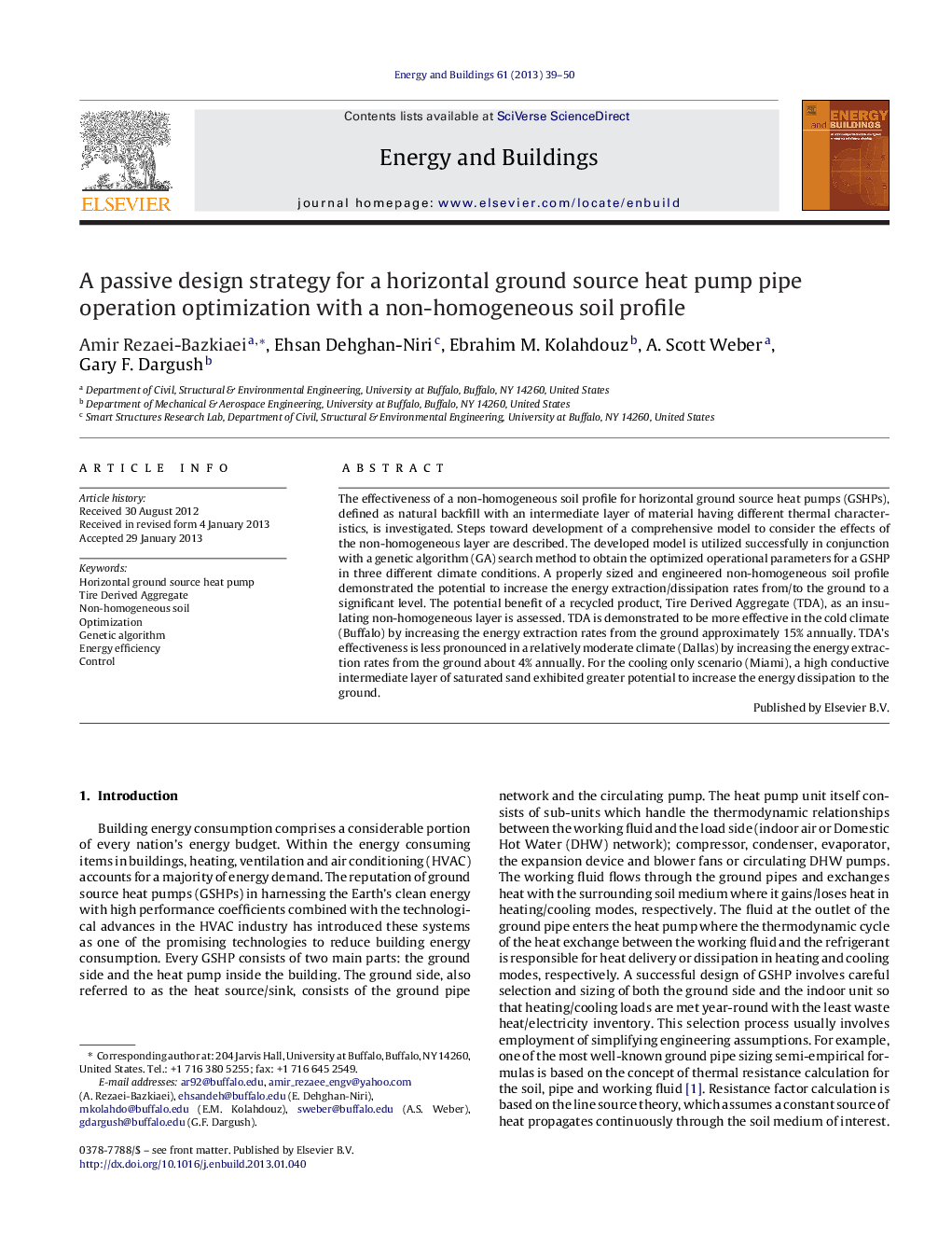| کد مقاله | کد نشریه | سال انتشار | مقاله انگلیسی | نسخه تمام متن |
|---|---|---|---|---|
| 263434 | 504075 | 2013 | 12 صفحه PDF | دانلود رایگان |

The effectiveness of a non-homogeneous soil profile for horizontal ground source heat pumps (GSHPs), defined as natural backfill with an intermediate layer of material having different thermal characteristics, is investigated. Steps toward development of a comprehensive model to consider the effects of the non-homogeneous layer are described. The developed model is utilized successfully in conjunction with a genetic algorithm (GA) search method to obtain the optimized operational parameters for a GSHP in three different climate conditions. A properly sized and engineered non-homogeneous soil profile demonstrated the potential to increase the energy extraction/dissipation rates from/to the ground to a significant level. The potential benefit of a recycled product, Tire Derived Aggregate (TDA), as an insulating non-homogeneous layer is assessed. TDA is demonstrated to be more effective in the cold climate (Buffalo) by increasing the energy extraction rates from the ground approximately 15% annually. TDA's effectiveness is less pronounced in a relatively moderate climate (Dallas) by increasing the energy extraction rates from the ground about 4% annually. For the cooling only scenario (Miami), a high conductive intermediate layer of saturated sand exhibited greater potential to increase the energy dissipation to the ground.
► Tire Derived Aggregate (TDA) demonstrated higher benefits in colder climates.
► Saturated sand demonstrated potential for efficiency improvement in warm climate.
► 40–60% less optimized seasonal energy rates than monthly values in heating.
► Minimal difference between the seasonal and monthly energy rates in cooling.
Journal: Energy and Buildings - Volume 61, June 2013, Pages 39–50